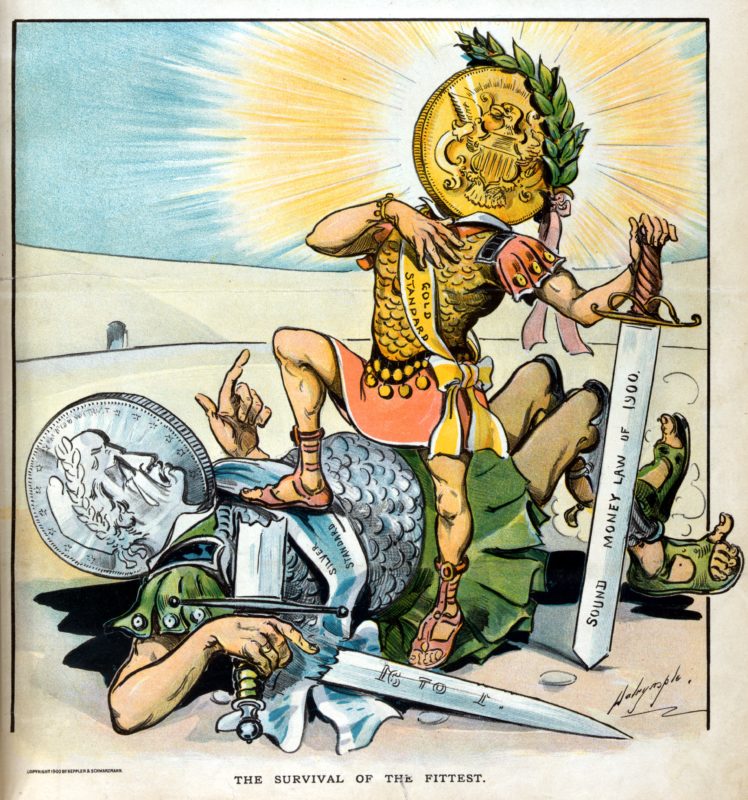The Death of Bimetallism and the Gold Standard Act of 1900
Proponents of the gold standard had observed numerous instances of instability in the bimetallic system since the late 18th century. This instability can be traced to Gresham’s Law, which colloquially states that “bad money drives out good.” Because the prices of two commodities such as gold and silver will invariably fluctuate relative to each other, there will be a tendency for people to hoard money minted from or backed by the relatively more valuable currency. For example, after the California gold rush, gold fell in price relative to silver, causing silver coins to be worth more than face value. Consequently, silver coins disappeared from the market as people sent them overseas to be melted down. The consequences of Gresham’s law were even more stark during the civil war, when people hoarded both gold and silver coins, leaving only fiat money such as base metal coins and “Greenbacks” in circulation.
In the years after the war and leading up to the 1873 act, large quantities of silver began to be mined in the American west and thereafter deposited and struck into coins at mints. Had this trend been allowed to continue, the opposite consequence of the post-Gold rush hoarding of silver would have taken place, with gold coinage and gold-backed currency disappearing from the market. This process could ultimately lead to high inflation and ensuing instability.
Ironically, even many of those debating the 1873 act were not aware that it effectively ended the minting of silver dollars (the minting of lower denomination silver coins had been ended by a previous law). Instead, lawmakers focused on several other technical provisions of the law, including the service fees charged by mints. But after depression resulted from the Panic of 1873 (a financial crisis stemming mostly from events other than the coinage debate), advocates of silver began demanding its reinstatement as legal tender. These advocates favored exactly the inflation that those favoring stability opposed, in order to reduce the burden of debtors.
The government restored bimetallism for a time with the Bland-Allison Act of 1878, and further increased silver coinage in circulation with the Sherman Silver Purchase Act of 1890. However, advocates of a currency backed by a single commodity won out in 1900, when the Gold Standard Act formerly codified it into law. The 1900 act fixed the value of the dollar at 25.8 grains of 90% purity gold. The 1900 act remained the law of the land until the abandonment of the gold standard in 1933, in the midst of the Great Depression.
Did Gresham’s law die with bimetallism? Advocates of a return to the gold standard, formally ended in 1971, see it in action as gold has skyrocketed in value relative to our fiat dollars since that time. Bad money appears to still be driving out good money today.
The facts reported in this summary are largely drawn from the Wikipedia pages https://en.wikipedia.org/wiki/Coinage_Act_of_1873 and https://en.wikipedia.org/wiki/Gold_Standard_Act.










